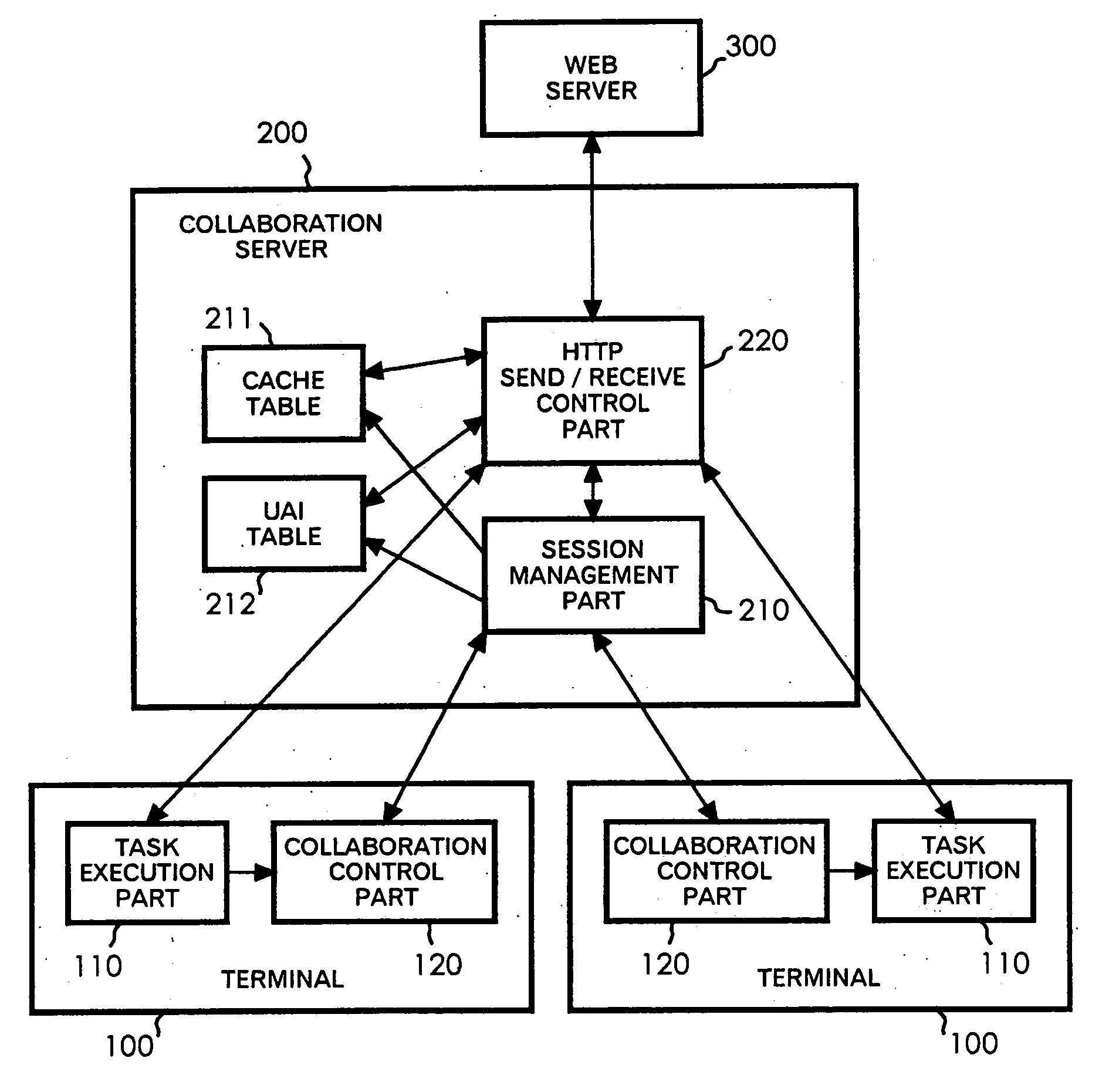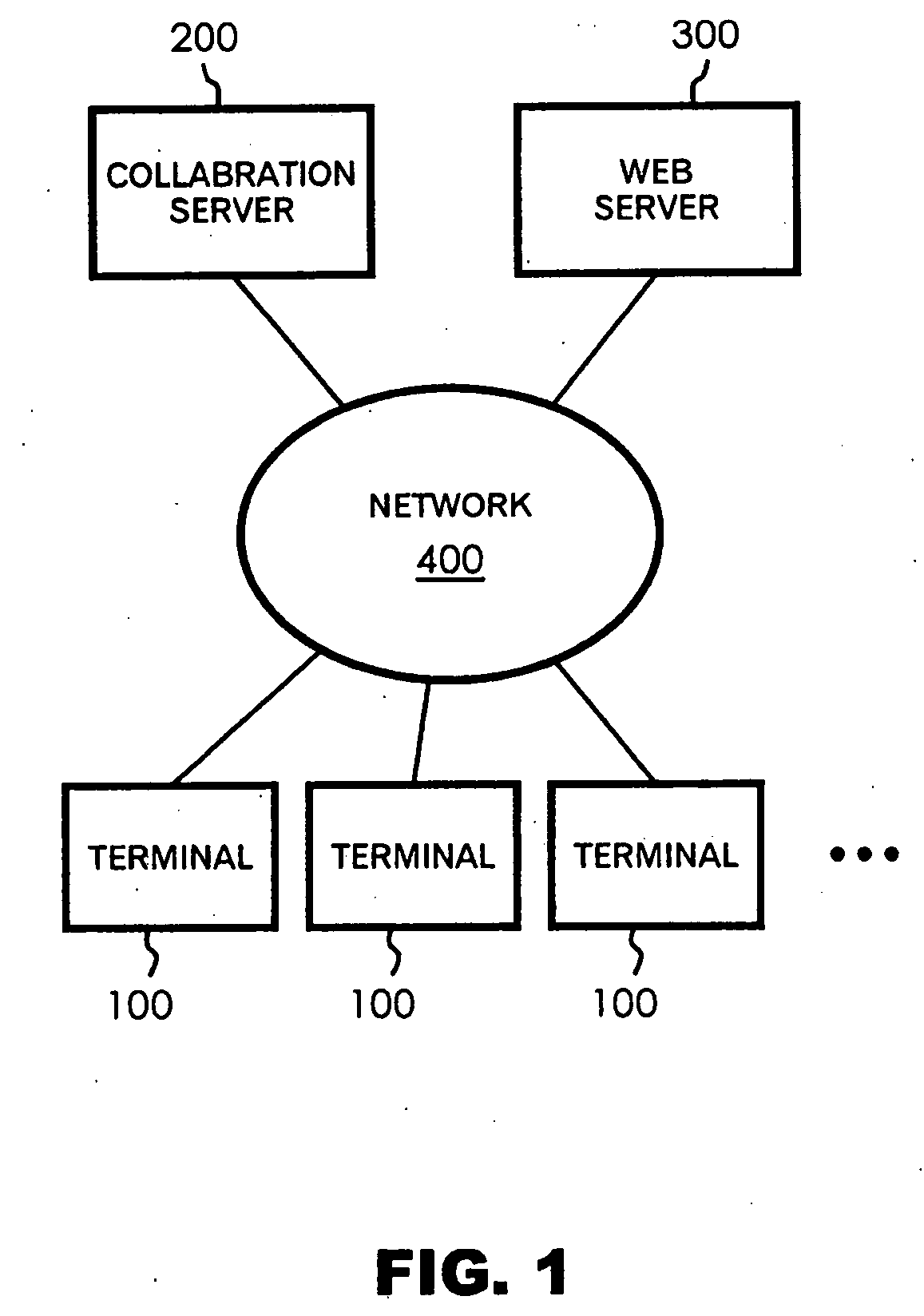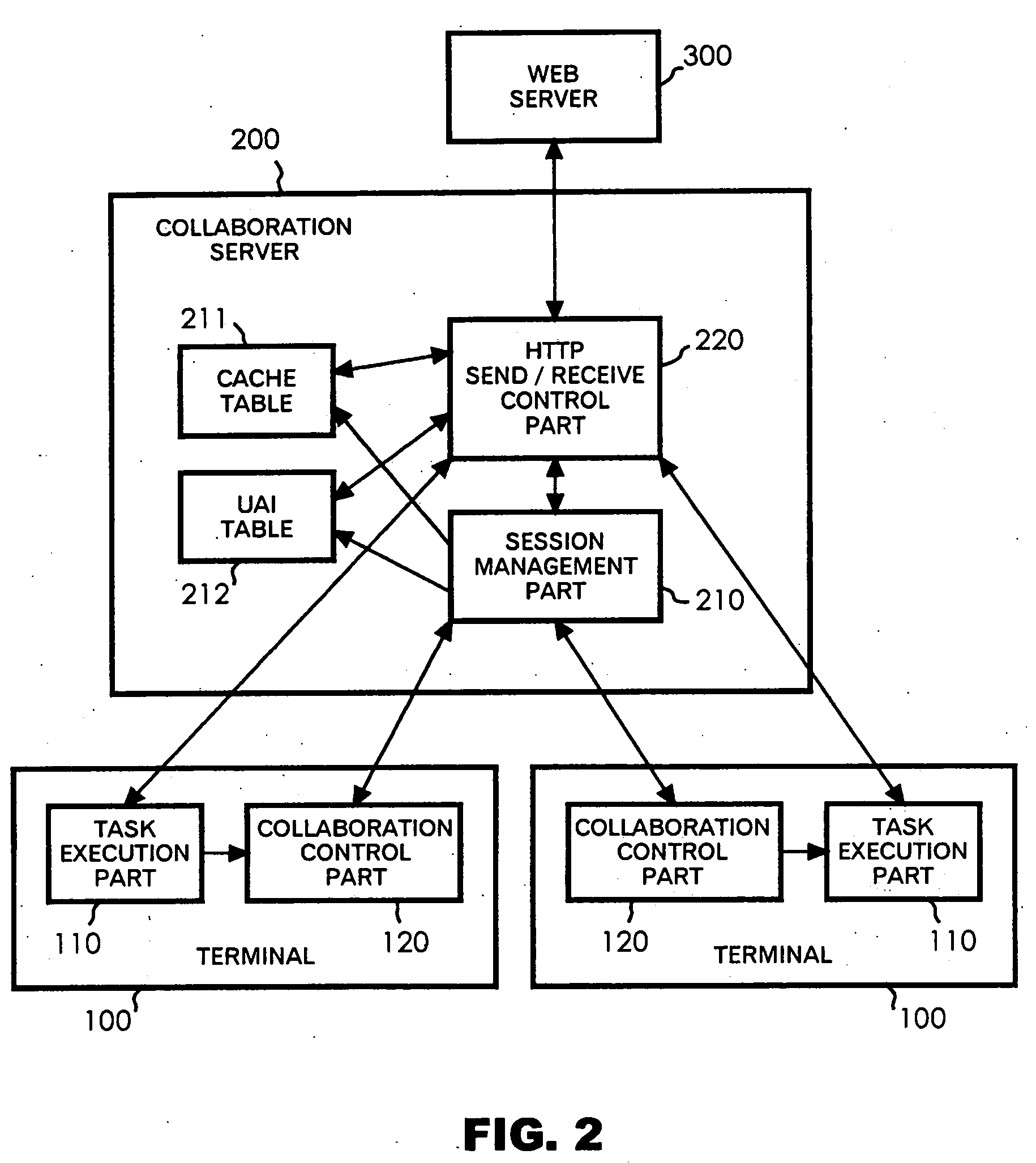Collaboration server, collaboration system, and session management method
a collaboration server and server technology, applied in the field of collaboration systems, can solve problems such as the inability of users doing collaborative work to have access to resources, and achieve the effect of avoiding the inability of users to access resources
- Summary
- Abstract
- Description
- Claims
- Application Information
AI Technical Summary
Benefits of technology
Problems solved by technology
Method used
Image
Examples
operation example 1
[0077] First, the description will be made of the operation when the customer accesses an access-controlled Web page ahead of the agent. It is assumed here that the customer accesses URLs / protected / foo.html and / protected / bar.html as the access-controlled Web pages to which access is permitted with the same authentication information (user ID and password).
[0078] Suppose that an acquisition request for the Web page at / protected / foo.html (GET / protected / foo.html) is sent from the task execution part 110a of the customer terminal 100a to the collaboration server 200. The Authorization header as the authentication information is not included in this acquisition request (access request without authentication information). Since the corresponding Web page has not been cached up to this time, the acquisition request is sent from the collaboration server 200 to the Web server 300 (see steps 401 to 405, 501, and 503 in FIGS. 4 and 5). Then, since no authentication information is included...
operation example 2
[0092] Next, the description will be made of the operation when the agent accesses an access-controlled Web page ahead of the customer.
[0093] Suppose that an acquisition request for the Web page at / protected / foo.html (GET / protected / foo.html) is sent from the task execution part 110b of the agent terminal 100b to the collaboration server 200. The Authorization header as the authentication information is not included in this acquisition request. Since the corresponding Web page has not been cached up to this time, the acquisition request is sent from the collaboration server 200 to the Web server 300 (see steps 401 to 405, 501, and 503). Then, since no authentication information is included in the acquisition request, the HTTP response with the status code 401 is returned from the Web server 300 to the collaboration server 200 (see step 504). The HTTP response includes the WWW-Authenticate header that requests input of the authentication information.
[0094] The HTTP response is cac...
PUM
 Login to View More
Login to View More Abstract
Description
Claims
Application Information
 Login to View More
Login to View More - R&D
- Intellectual Property
- Life Sciences
- Materials
- Tech Scout
- Unparalleled Data Quality
- Higher Quality Content
- 60% Fewer Hallucinations
Browse by: Latest US Patents, China's latest patents, Technical Efficacy Thesaurus, Application Domain, Technology Topic, Popular Technical Reports.
© 2025 PatSnap. All rights reserved.Legal|Privacy policy|Modern Slavery Act Transparency Statement|Sitemap|About US| Contact US: help@patsnap.com



